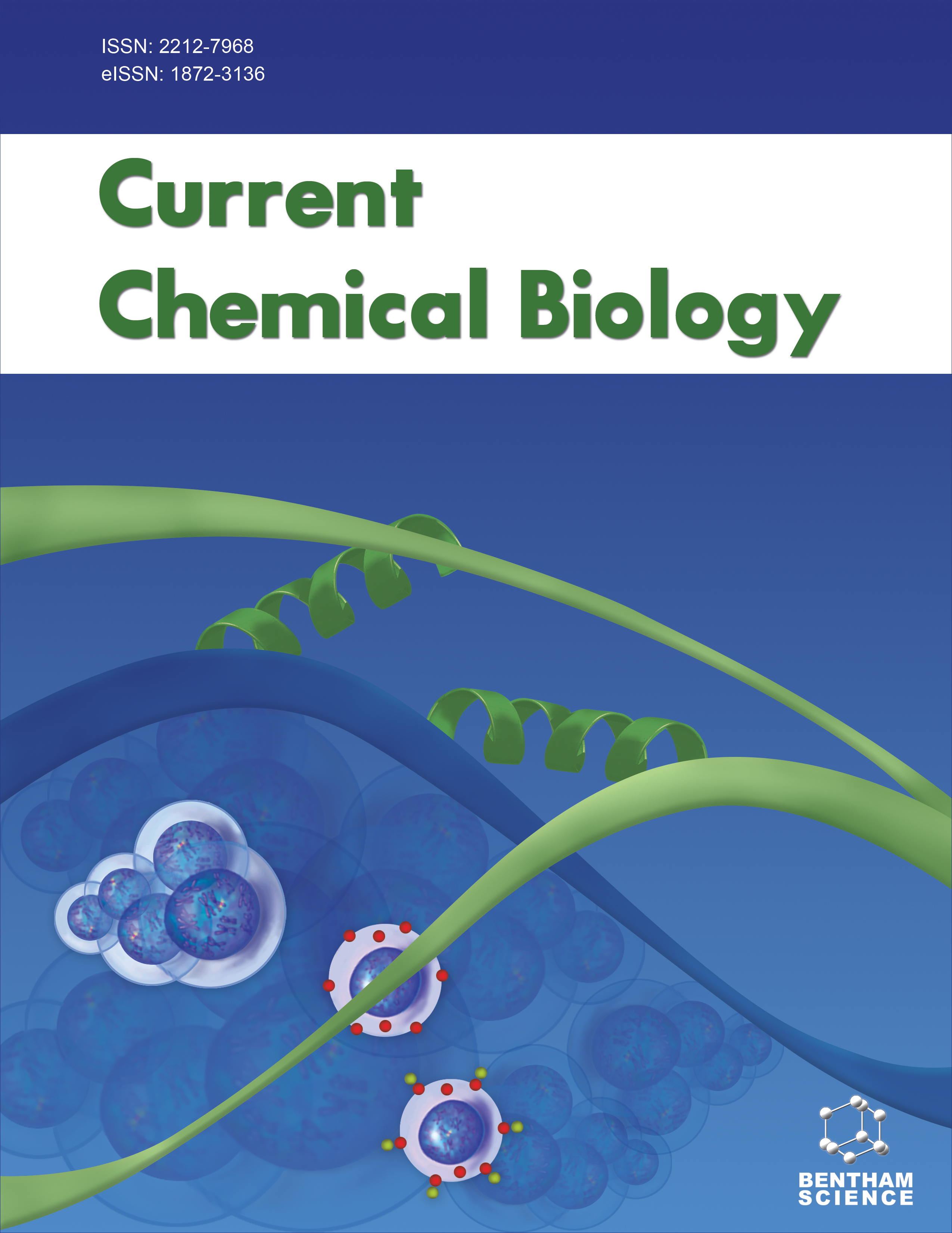- Home
- A-Z Publications
- Current Chemical Biology
- Previous Issues
- Volume 4, Issue 1, 2010
Current Chemical Biology - Volume 4, Issue 1, 2010
Volume 4, Issue 1, 2010
-
-
Regulation of p53 Activity
More LessAuthors: Karen A. Boehme and Christine BlattnerP53 is one of the most important tumour suppressor proteins. While its activity seems to be dispensable for normal proliferating cells, this protein is required to maintain genomic integrity after DNA damage. In response to cellular stress, the amount of p53 protein accumulates and fulfils its function as a transcription factor. Most of the genes that are regulated by p53 control progression through the cell cycle or initiate cell d Read More
-
-
-
Gankyrin Oncoprotein: Structure, Function, and Involvement in Cancer
More LessGankyrin, a newly defined oncoprotein also known as PSMD10 and P28, functions as a dual-negative regulator of the two most prominent tumor suppressor pathways, the CDK/pRb and MDM2/P53 pathways. Its aberrant expression has been prevalently found in human hepatocellular carcinomas (HCC) and esophagus squamous cell carcinomas (ESCC), indicative of the potential of gankyrin as a rational diagnostic and t Read More
-
-
-
Chemical Tumor Biology of Heparan Sulfate Proteoglycans
More LessAuthors: Karthik Raman and Balagurunathan KuberanHeparan sulfate proteoglycans (HSPGs) play vital roles in every step of tumor progression allowing cancer cells to proliferate, escape from immune response, invade neighboring tissues, and metastasize to distal sites away from the primary site. Several cancers including breast, lung, brain, pancreatic, skin, and colorectal cancers show aberrant modulation of several key HS biosynthetic enzymes such as 3-O Sulfotransferase Read More
-
-
-
Cytopathological Mechanisms in Mitochondrial Disease
More LessAuthors: Lisa Francione and Paul R. FisherThe relationship between genotype and phenotype in mitochondrial diseases is complicated and poorly understood. The clinical manifestations of mitochondrial diseases vary dramatically in terms of symptoms, severity and age of onset. Furthermore, the same genetic defect can result in different symptoms amongst various individuals whereas different mutations can lead to the same phenotype. Such variation makes it i Read More
-
-
-
Natural Compounds as Antagonists of Canonical Wnt/β-Catenin Signaling
More LessAuthors: Pay C. Leow, Zhan Yuin Ong and Pui-Lai Rachel EeOverwhelming evidence that implicates aberrant activations of the canonical Wnt/β-catenin signaling pathway in oncogenesis and cancer progression has emerged in recent times. Accordingly, disruption of this signaling pathway offers an opportunity for effective cancer therapy. Despite various approaches to target components of the Wnt/β-catenin signaling pathway, safe and efficacious therapeutic agents have Read More
-
-
-
Structural Mechanisms of Slow-Onset, Two-Step Enzyme Inhibition
More LessWhereas the ability to recognize and measure the kinetics of slow-onset enzyme inhibition is fully developed, our understanding of the structural mechanisms is still evolving. This literature review focuses on the two-step process in which a rapid-equilibrium enzyme/ inhibitor (EI) complex isomerizes slowly and reversibly to a tighter EI* complex. Although structural details are still mostly lacking, some generalities have bee Read More
-
-
-
Cold-Adapted Esterases and Lipases: A Biodiversity Still Under-Exploited
More LessMicro-organisms that thrive at low temperatures produce cold-adapted enzymes which generally display high catalytic efficiency making these biocatalysts particularly interesting either for investigating stability/flexibility relationships, or for their quite wide applications. Psychrophilic lipases and esterases have attracted attention because of their increasing use in the organic synthesis of chiral intermediates due to their low o Read More
-
-
-
Potential of Resveratrol in Preventing the Development of Heart Failure
More LessHeart failure is a leading cause of mortality in North America and most other parts of the world. Its development is secondary to diseases such as hypertension, coronary artery disease, valvular heart disease or cardiomyopathies. Current therapies for preventing heart failure include the use of diuretics, inhibitors of the renin-angiotensin-aldosterone system and β-adrenergic receptor blockers. These treatments have been mode Read More
-
Volumes & issues
Most Read This Month
Article
content/journals/ccb
Journal
10
5
false
en


